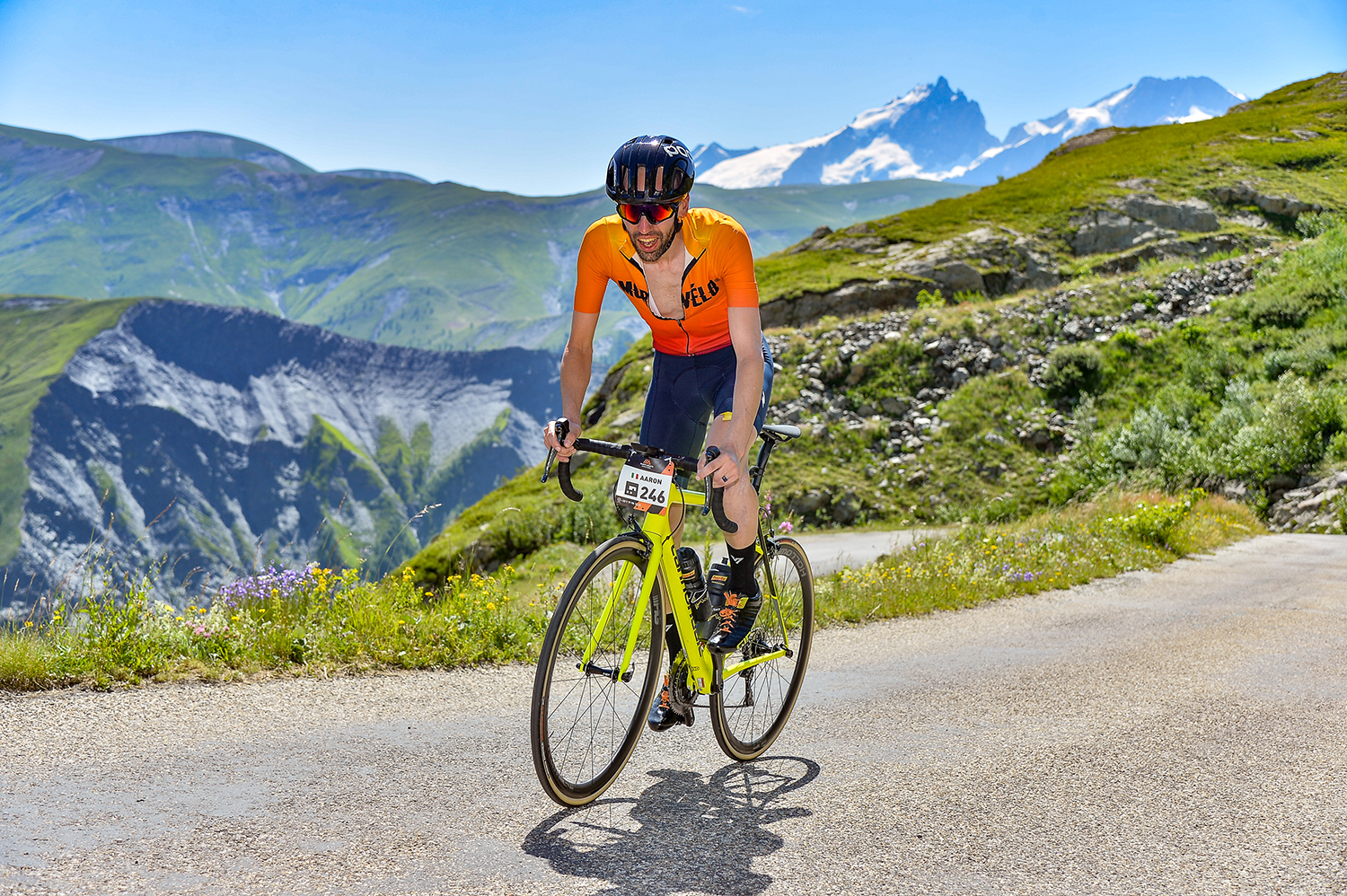Best time trial helmets: Super-fast helmets for TT and triathlon
The best time trial helmets for triathletes and TT specialists looking to save watts and improve comfort and safety
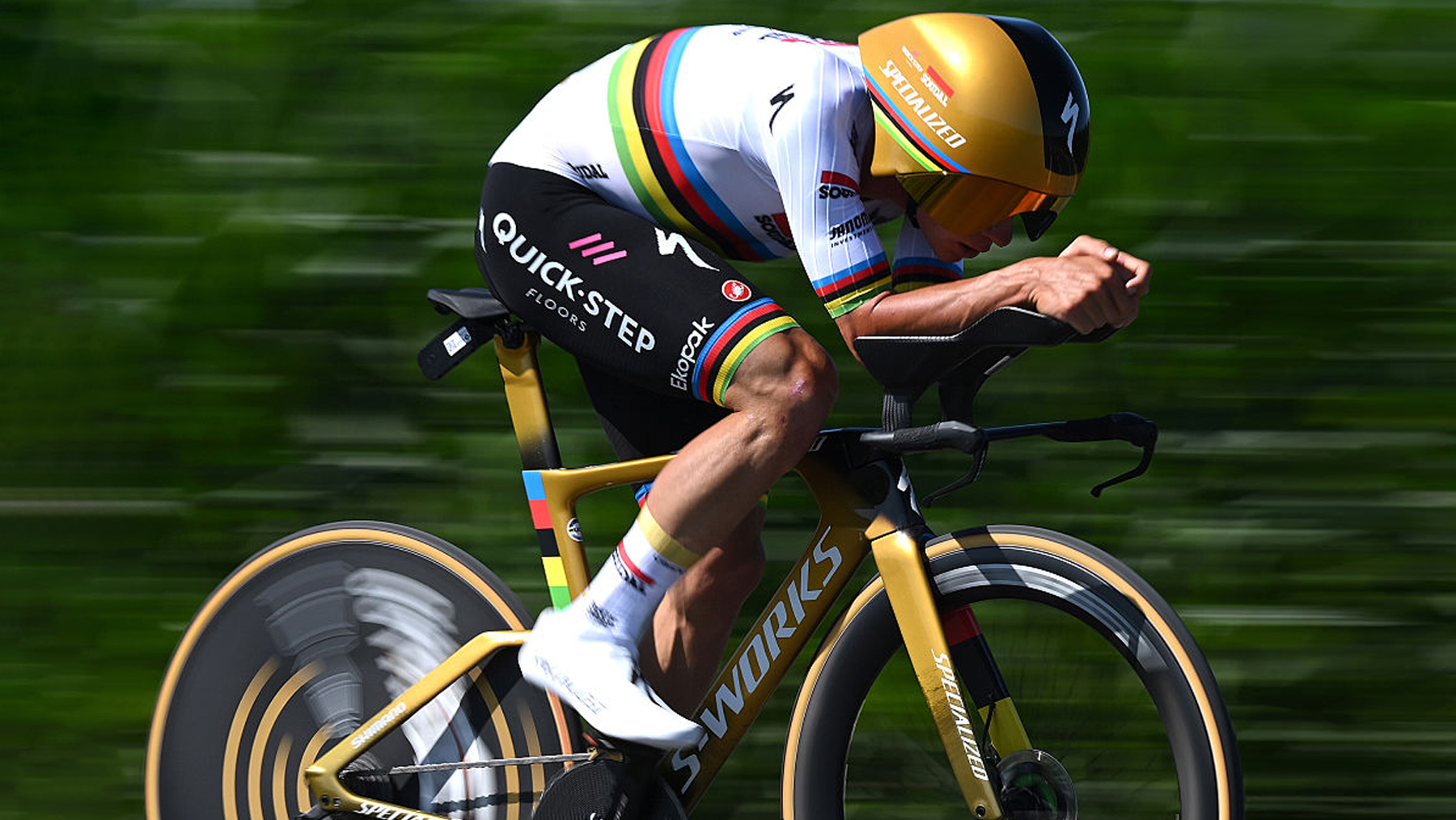
Time trial helmets have undergone significant changes in recent years, thanks to new technology and advancements in the science behind achieving faster times. This means that helmets, once considered the gold standard, have quickly become obsolete, as modern rhetoric examines the way the helmet interacts with the shoulders, back, and front areas. Finding a modern time trial helmet that suits you is also an easy way to shave a significant amount of time off your personal best 10- and 25-mile time trial times, or improve your triathlon bike split.
Anytime you ride a bike, the speed at which you travel is a function of your ability to overcome the forces acting against you – the air. One of these functions is the ability to move through the air, meaning that as you increase your speed, the aerodynamic forces become an increasingly limiting factor. While the best triathlon and TT wheels are another significant way of improving your aerodynamics, time trial helmet is a smaller financial investment.
The difficulty lies in finding a time trial helmet that not only suits your position but also accommodates your ability to maintain the ideal position. As such, you'll want to consider different shapes and sizes. Longer or wider helmets might be faster if you can keep a fixed head position, but any head movement can drastically slow you down. Smaller, more rounded helmets can help and be a faster option in this regard, especially when turning or dropping your head. You'll need to train and practice riding in the time trial position to ensure optimal performance.
Please note that time trial helmets are not suitable for mass participation events or group rides; if you’re looking for aero gains in your next group ride or criterium, check our guide on the best aero road helmets.
Best time trial helmets: quick list
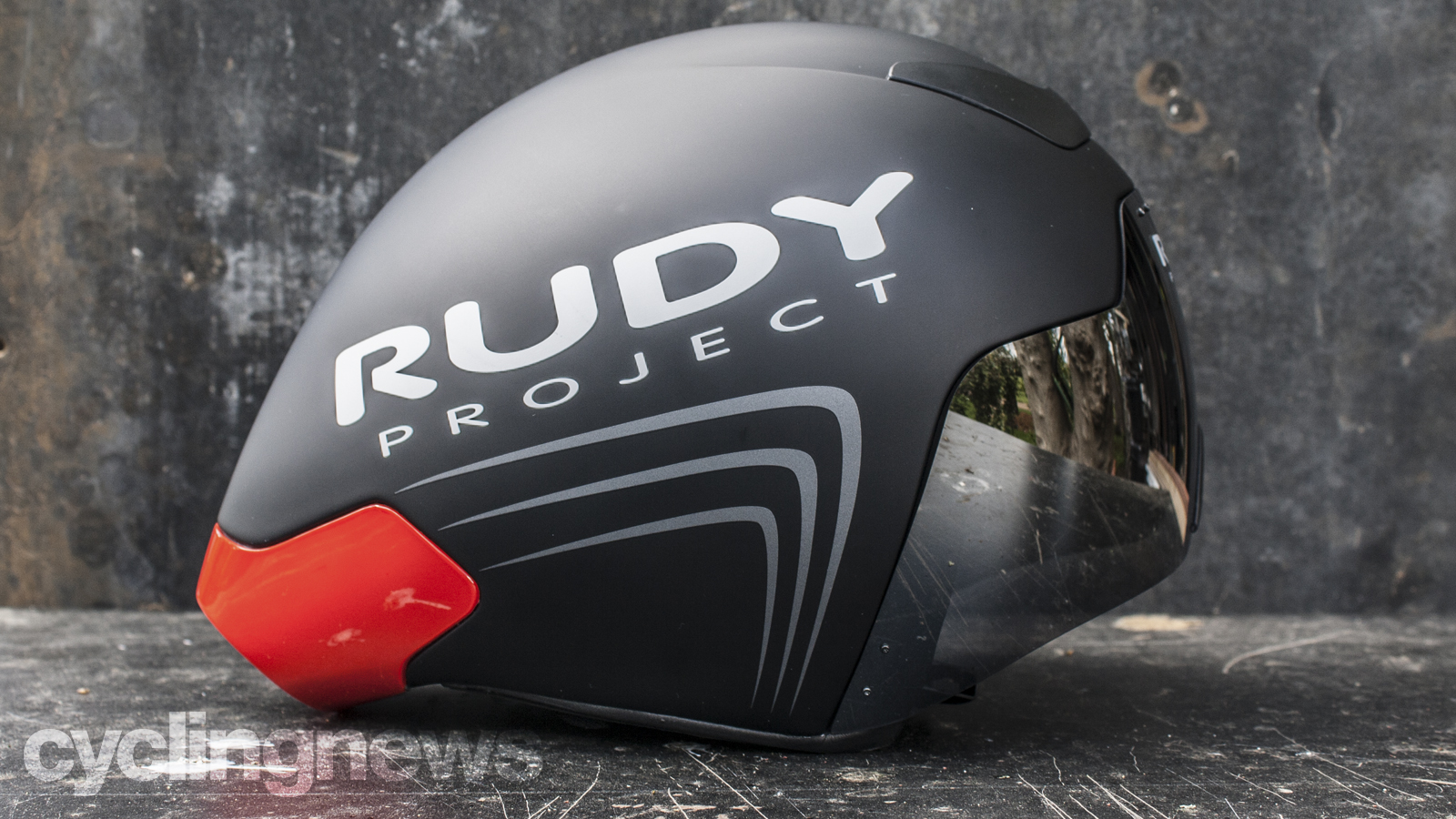
Rudy Project worked with Swiss Side to ensure that even if you aren't the best at holding a position, you'll still benefit from The Wing TT helmet thanks to its rounded shape and short tail.
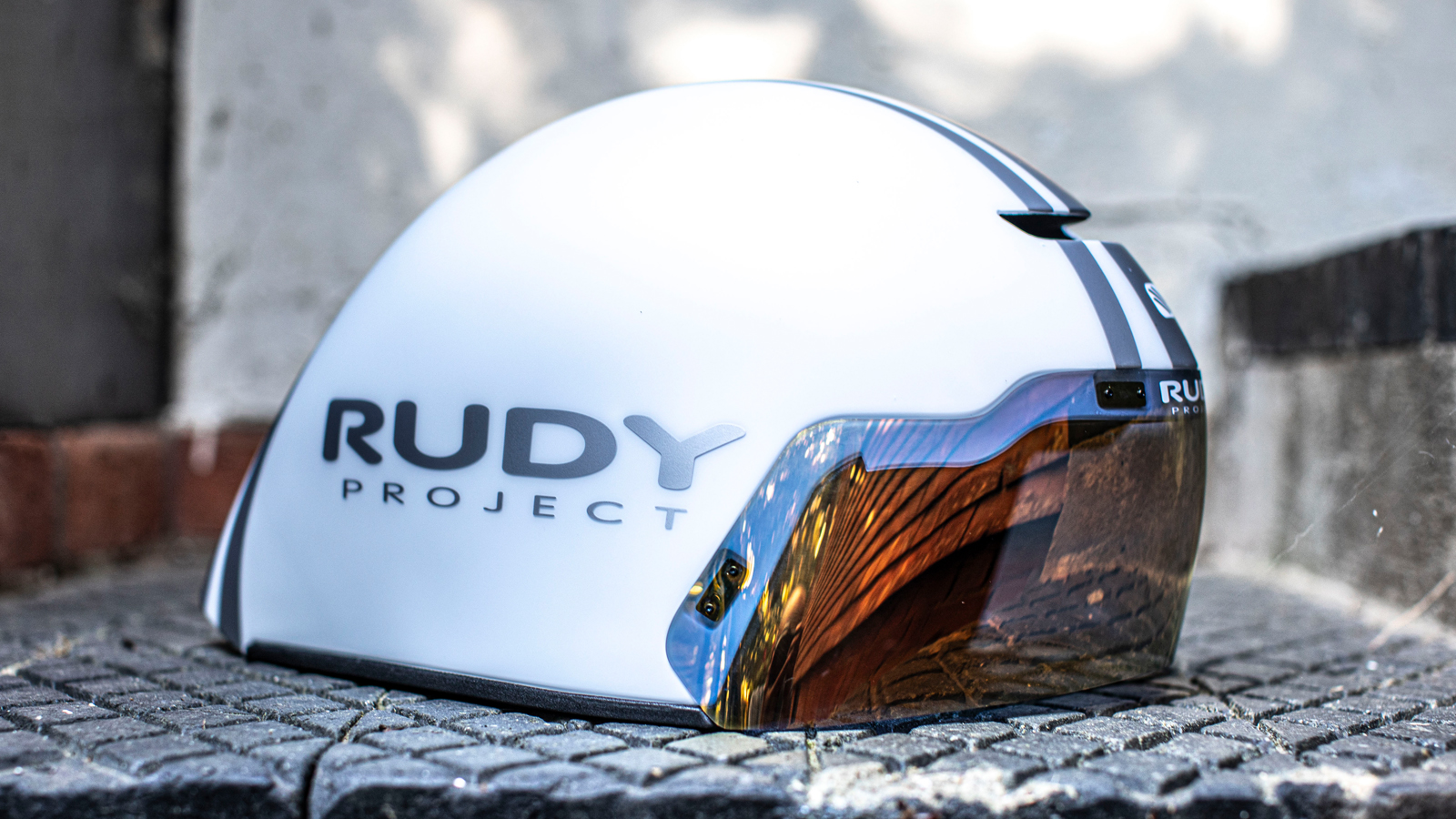
The Rudy Project Wingdream is the company's premier time trial offering and helmet used exclusively by WorldTour team, Bahrain Victorious. Its shape follows modern trends of wider dimensions with a shallower tail, designed to work as a system with your shoulders and upper back. According to Rudy Project, it's 16.6w faster at 45km/h compared to The Wing.
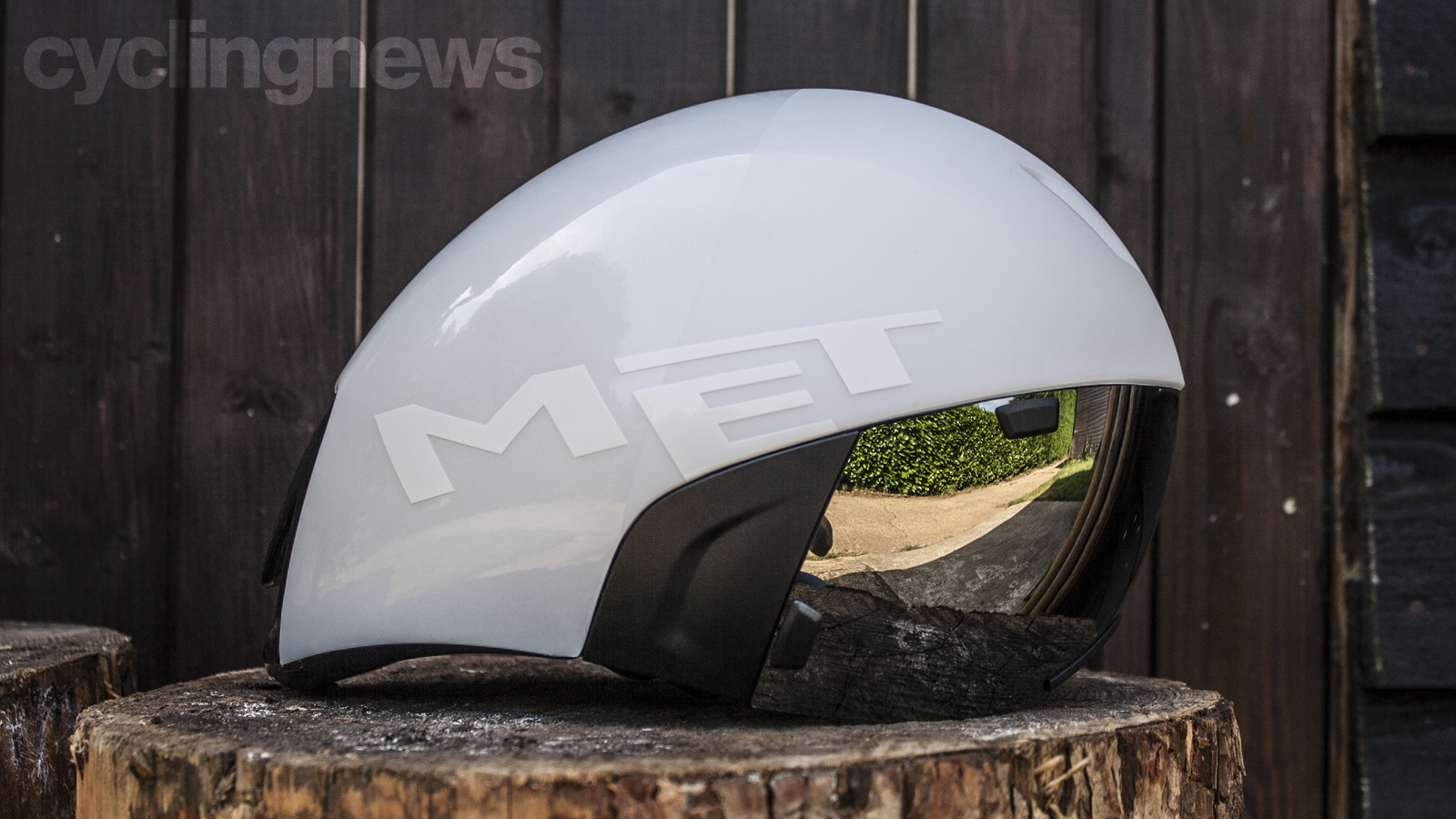
With its short-tail design, the Met Codatronca is one of the most aerodynamic options among the best time trial helmets, no matter your position. It comes with a handy magnetic clip-on visor, available in three colours, which can be stowed on the upper portion of the helmet when needed.

The POC Cerebel helmet is comfortable and aerodynamic from all angles and comes with a magnetic visor from Zeiss. While pricey, the helmet has a forgiving nature when your positioning isn't optimal, and excels in terms of comfort and field of view.
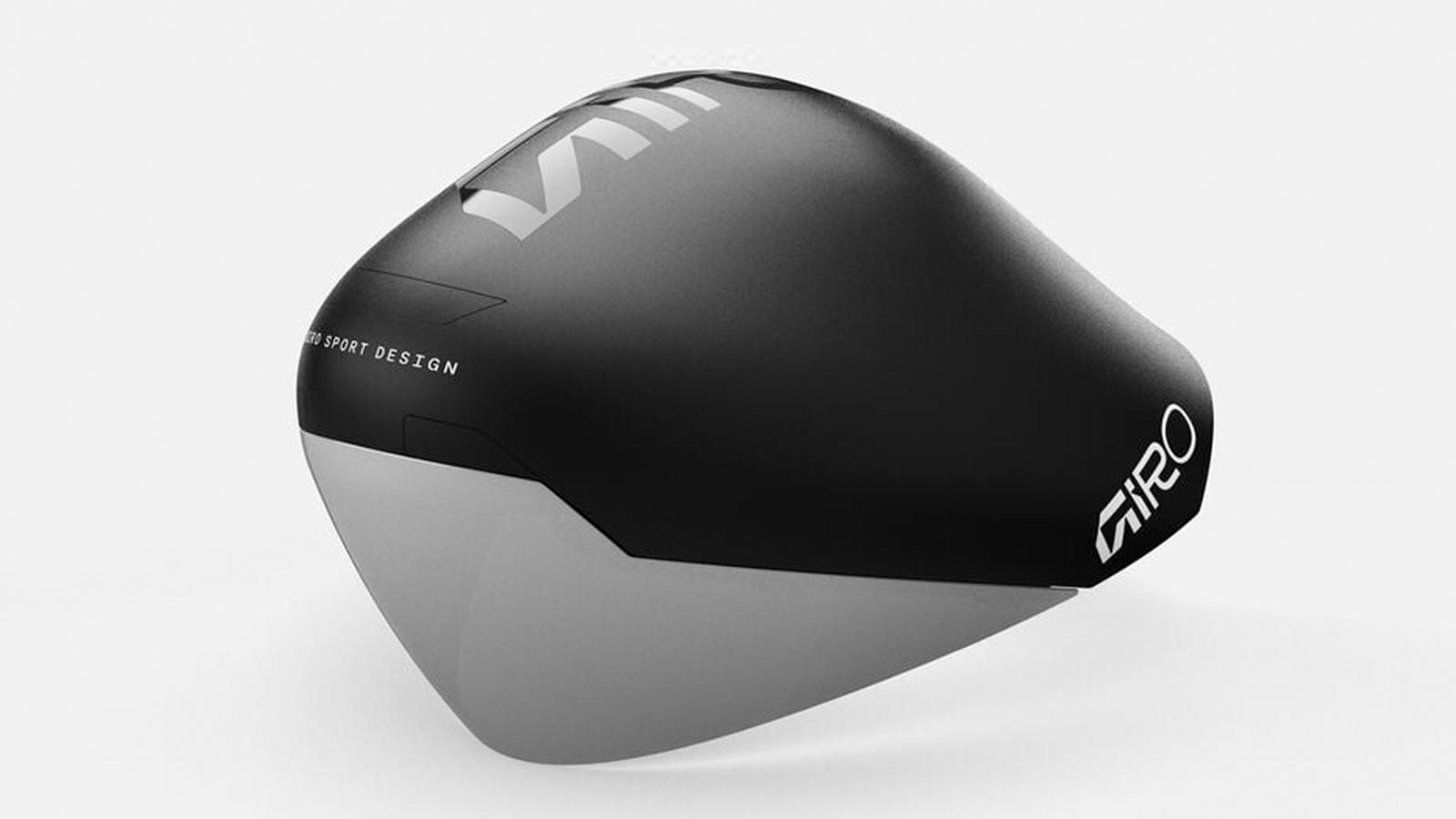
Designed in the wind tunnel with two-time Tour de France winner Jonas Vingegaard, the Aerohead II Mips is Giro's fastest and most aerodynamic time trial lid. Thanks to the introduction of a Mips Air Node slip-plan liner, the Aerohead II is also one of the safest time trial helmets on the market.
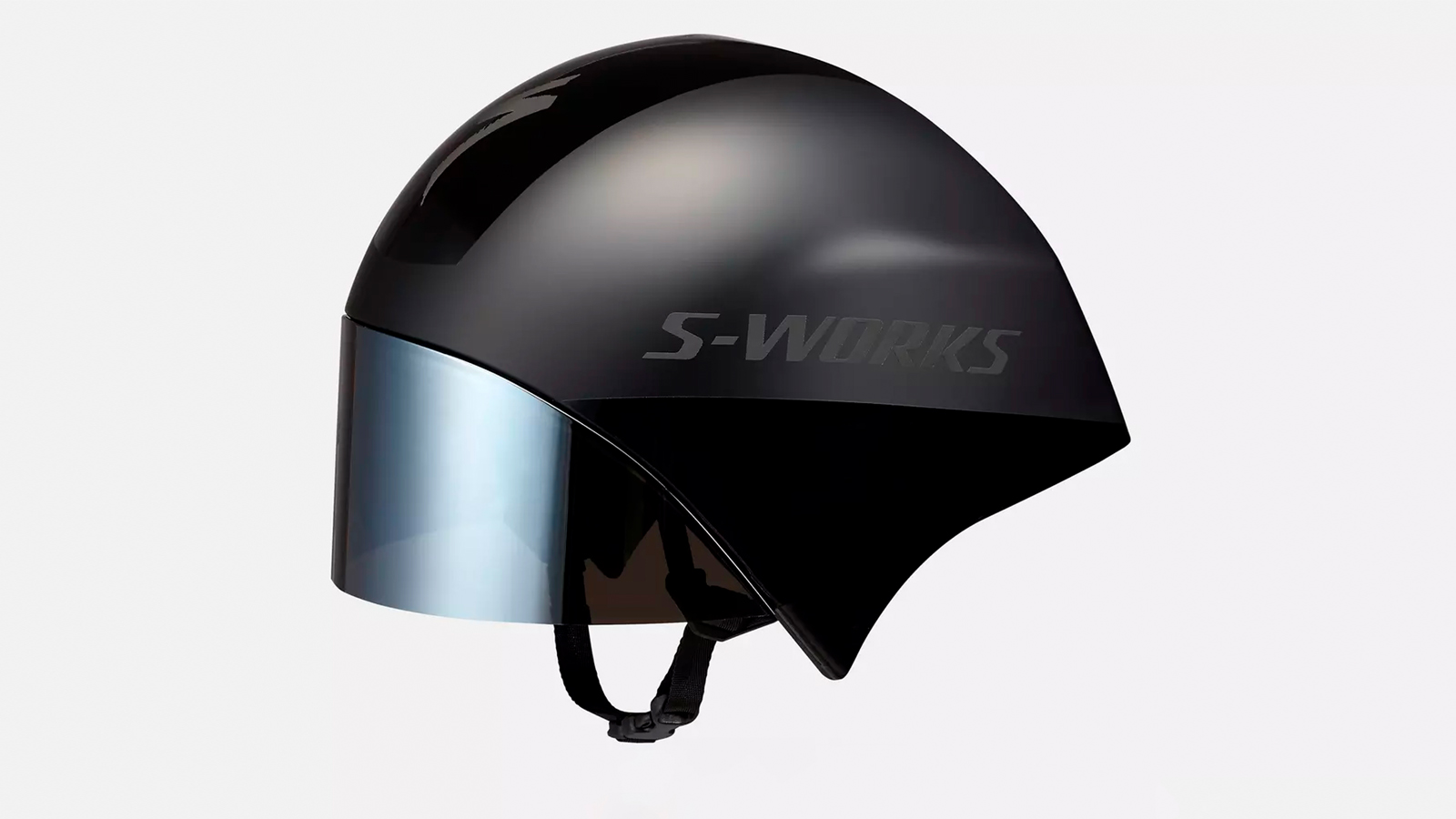
Used by Remco Evenepoel, the Specialized S-Works TT 5 is one of the fastest time trial helmets in the pro peloton. Built around an ergonomic fit and class-leading optics, it also benefits from MIPS Node Air technology, which is integrated directly into the helmet padding. Its shape has been refined to sit closer to the shoulders, reducing drag and allowing for cleaner airflow.
Last updated on 14th of July 2025
Updated intro., removed older helmets that are not available anymore (Smith, Specialized, Garneau, Giro, and Lazer) and added Met Drone II Wide, Rudy Project Wingdream, Specialized S-Works TT5, and Giro Aerohead II helmets.
Best time trial helmets
You can trust Cyclingnews
1. Best for triathletes

Specifications
Reasons to buy
Reasons to avoid
✅ You want the best TT helmet for all conditions: We found the Rudy Project The Wing to be comfortable for long rides, thanks to its adjustable fit and lightweight design.
✅ You struggle to maintain the TT position: The aerodynamic short-tail design and rounded shape of the helmet mean you won't get penalised if you become tired and drop your head.
❌ You are looking for the fastest time trial helmet: There are speedier designs available, particularly the Rudy Project Wingdream, but this requires discipline and experience in the time trial position.
While The Wing is undoubtedly a visually beautiful helmet, it's the performance that counts. Rudy Project worked with Swiss Side to ensure that even if you aren't the best at holding a position, you'll still benefit from its aerodynamics. Through wind tunnel and CFD testing, the brand claims that riding at 45km/h with the vents closed can help you save up to 12.6 watts.
As with all aero helmets, the key to usability is finding the right balance between aero performance and weight, as well as ventilation. Rudy Project addresses this challenge by integrating two front vents that can be opened or closed through a magnetic shield, depending on your needs.
At the rear, you'll find a large exhaust port for shedding heat, and the visor is removable with a magnetic attachment system.
2. Best for performance

2. Rudy Project Wingdream
Specifications
Reasons to buy
Reasons to avoid
✅ You want a good-fitting helmet: In true Rudy Project fashion, we found the Wingdream to offer excellent comfort and an impressive overall fit, thanks to its retention system and magnetic strap buckle.
✅ You are looking to go faster: The wide, aerodynamic design directs the airflow towards the shoulders, enhancing speed.
❌ You are new to time trial or triathlon: The Wingdream is all about performance and might feel peculiar to new riders – we suggest opting for the Rudy Project The Wing as it's cheaper and provides better comfort.
The Rudy Project Wingdream is the company's top-of-the-line time trial helmet, the result of two years of development. It is used exclusively by the WorldTour team, Bahrain Victorious, with a shape that follows modern trends in wider dimensions and a shallower tail, designed to work as a system with your shoulders and upper back. According to Rudy Project, it's 16.6w faster at 45km/h compared to The Wing.
It has one of the better fits among performance-oriented time trial helmets, which is adjustable through a tailorable retention cradle system. It fits nicely over the shoulders - something you can feel when tucked in the TT position - with a commanding view ahead thanks to a crystal-clear visor. Ventilation is good, too.
It's available in two colours only: matte black and white, and both can prove challenging to keep clean as the surface is prone to marking. The Wingdream comes standard with an orange lens, but you'll need to purchase a spare separately, preferably a clear option for cloudy/wet weather.
Overall, the Rudy Project Wingdream is one of the best time trial helmets available, offering high levels of performance if you're disciplined enough to maintain your position for extended periods.
3. Best allrounder

Specifications
Reasons to buy
Reasons to avoid
✅ You want the best TT helmet for all conditions: The Met Codatronca offers the best overall attributes for time trialists and triathletes – a good fit, top aerodynamics, and lens coverage.
❌ You want more ventilation: Despite the vents, the Codatronca tends to run hot, due to its snug fit against the face and ears.
One of the best short-tail time trial helmets we've tested is the Met Codatronca - literally translated as 'truncated tail'. When we posted our review of the Met Codatronca, there were plaudits among our testers for its comfort, which provided a snug fit without any concerning pinch or pressure points, regardless of the position of your head.
And it's on the subject of head position where this helmet stakes its claim among the best. With its shortened tail, the Codatronca will remain aero, no matter if you're locked into the perfect position or you're tired and letting your head drop.
The front comes with a magnetic clip-on visor, which is available in three colours and can be flipped if you want to keep it out of the way. However, this will cover the vents, which themselves are surprisingly helpful given their diminutive size. Inside, there's a gel pad to aid grip and comfort, and Met's Safe-T Orbital retention system provides a wraparound adjustment with four vertical positions and adjustable occipital positioning.
The magnetic buckle is quick and easy to use one-handed in the panicked rush of transition, and the rear dial is easily accessible, unlike the POC Cerebel and others. The magnetic visor snaps in place upside down, meaning that's one less thing to remember to pick up. It's already there, so flip it down once you're on the move.
4. Best for optics

Specifications
Reasons to buy
Reasons to avoid
✅ You want class-leading optics and field of view: With its Zeiss lens/visor, the POC Cerebel is hands down the leading TT helmet for optics.
✅ You want a well-priced helmet: The Cerebel is the most affordable time trial helmet in both POC's range and its rivals.
❌ You favour looks over performance: The Cerebel is bulbous-looking and not the most flattering lid in the segment – an acquired taste if you're not a current POC user.
The POC Cerebel TT helmet feels immediately comfortable and aero from all angles. Despite being the Swedish brand's most affordable time trial helmet, it still represents a significant outlay. It has a forgiving nature, excelling in comfort, especially when your positioning isn't optimal.
It offers an exceptional retention system that holds it in place securely and comfortably without any pressure points, which can be incredibly reassuring in terms of safety despite its lack of rotational protection.
Five small air vents at the front and three outlets at the rear allow heat to escape, preventing overheating. It comes with a removable visor held in place by five magnets, which helps prevent misting and allows for a little airflow. However, its biggest draw is its short, rounded tail, which allows you to easily move your head or take a drink without immediately creating a sail.
Head over to our POC Cerebel TT helmet review for more details.
5. Best for safety

5. Giro Aerohead II MIPS
Specifications
Reasons to buy
Reasons to avoid
✅ You want the safest time trial helmet: Incorporating a Mips Airnode slip-liner and an in-Mould polycarbonate shell has resulted in one of the safest time trial helmets available.
✅ You want a high-clarity visor: The Giro Aerohead II Mips gets two vented visors (smoke and clear), complete with magnetic anchor attachment.
❌ You prefer a traditional-looking helmet: The Aerohead II Mips helmet is not the prettiest option around, and its oddball styling won't appeal to all.
❌ You want an affordable helmet: Priced at £499.99, the Aerohead II Mips is a considerable investment.
Visma-Lease a Bike debuted the new Giro Aerohead II MIPS time trial helmet at the start of Tirreno-Adriatico in 2024, receiving a mixed reception. Boasting a giant visor, and an elongated nose and tail design, it also gets broad shoulder-hugging wings – it's a peculiar-looking lid.
It was designed with CFD and proven in the wind tunnel with two-time Tour de France winner Jonas Vingegaard. Giro claims it's the company's most aerodynamic time trial helmet ever. While divisive in looks, it's packed with features that make it one of the safer options among the best time trial helmets. This includes a Mips Air Node liner for rotational energy management.
Optics come courtesy of a magnetically attached, oversized Zeiss visor (available in two colours), which is positioned away from the face for better airflow, field of view, and less chance of fogging.
6. Best for fit and comfort

6. Specialized S-Works TT 5 helmet
Specifications
Reasons to buy
Reasons to avoid
✅ You want class-leading optics and field of view: With its Zeiss lens/visor, the POC Cerebel is hands down the leading TT helmet for optics.
✅ You want a well-priced helmet: The Cerebel is the most affordable time trial helmet in both POC's range and its rivals.
❌ You prefer a traditional-looking helmet: The Aerohead II Mips helmet is not the prettiest option around, and its oddball styling won't appeal to all.
❌ You want an affordable helmet: Priced at £499.99, the Aerohead II Mips is a considerable investment.
Designed in collaboration with UCI Time Trial World Champion Remco Evenepoel, the Specialized S-Works TT 5 helmet was shaped in the wind tunnel and refined in real-world racing conditions. It ditches the long-tail design of some of its rivals for the now de rigueur short-tail blueprint with a wide design that has been shaped to sit nearer to the shoulders, reducing drag and improving speed.
There's more to the S-Works TT 5, however, than its performance credentials – it's been designed to provide a performance fit with comfort of the highest order. This stems from the use of a Mips Air Node liner, an adjustable retention system, a strap arrangement that is non-obtrusive, and a fit that sits away from the face and ears.
The three sizes mean there's an option for most head sizes, but finding the one that works with your position and shoulders will be the challenging part, especially considering the lofty price.
7. Best for professional athletes
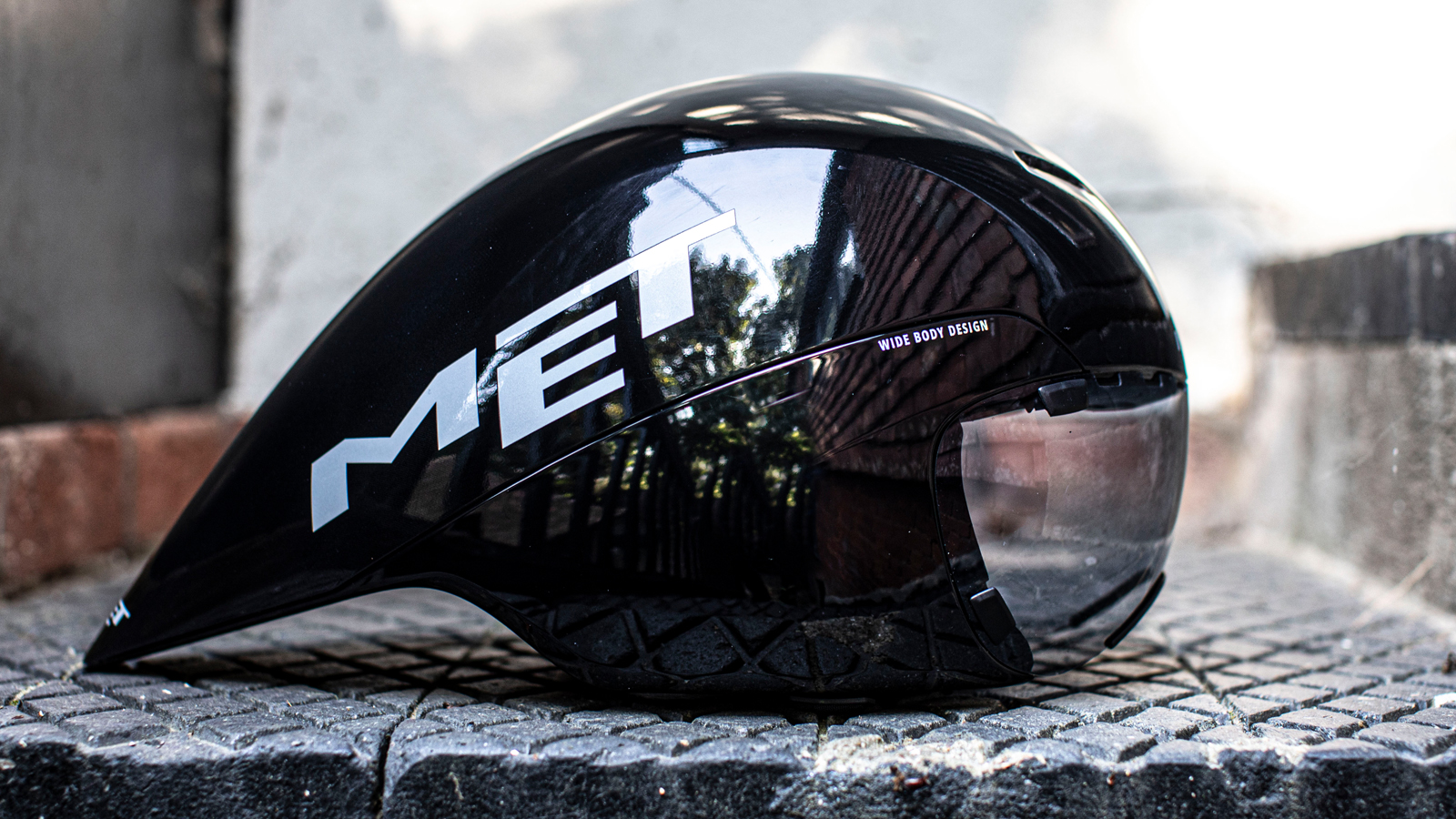
7. Met Drone Wide Body II
Specifications
Reasons to buy
Reasons to avoid
✅ You want pure speed and performance: The Drone Wide Body II fits tightly against the ears and shoulders – you can also feel the long tail on your back, which ensures you remain in the best position possible.
✅ You're a Tadej Pogacar fan: Used exclusively by Tadej Pogacar, the Met Drone Wide Body II is all about going full throttle and cutting through the air like a bullet.
❌ You prioritise comfort over performance: While the fit is decent for a TT lid, it's tighter than most and designed for optimal integration with the upper back and shoulders.
❌ You want a well-priced helmet: The Met Drone Wide Body II is an out-and-out performance helmet and comes with the price to match.
The Met Drone Wide Body II was developed through testing and detailed feedback from Tadej Pogacar and the Team UAE Emirates XRG. As a performance-oriented lid, it's been engineered to channel airflow over the shoulders, reducing air turbulence and drag. The long-tail design allows for a low-drag head position, but requires discipline to achieve the best possible performance – thankfully, the tail rests on your back when you're in the perfect position.
While it ships with a clear lens, there are two other options - Fume and Mirror - should you require it for specific racing conditions. The fit is on the racy side, but still comfortable for its intended purpose; you'll need to spend some time adjusting the helmet position and retention system to ensure the best fit and comfort. There are two sizes available – Medium and Large.
It's one of the priciest time trial helmets among the options listed here, so make sure you do your research before pulling the trigger.
How to choose the best time trial and triathlon helmet
How does my position affect my time trial helmet choice?
Choosing the best time trial helmet for you will be determined primarily by your head position and how long you're capable of 'turtling' over the course of an event. For those who are incredibly disciplined and their head stays perfectly still for the entirety of the TT, a helmet with a slightly longer tail should create less wind resistance — 'should' being the key word, as there is a myriad of other variables in a TT position that can affect drag.
For those who are a bit less statuesque or prefer a more head-up position, something with a short-tail shape will likely yield the best results.
What do I need to know about ventilation in a time trial helmet?
Ventilation is a challenging aspect when it comes to time trials, as closed-off helmets are usually faster in the wind tunnel. However, if you overheat during your event, your body will limit your maximum output.
Some helmets have removable plugs, while others allow for the visor to be removed, and some others have a hidey-hole for ice bags or ports for water poured over your head to filter through. Don't expect gale-force winds to pass through the shell, though, even with the best-vented TT lids.
When shopping for a TT helmet, a key consideration is the climate of the events you’re targeting and how you plan to handle the heat. If you overheat quickly, magnetic visors that can be stashed on the brow might save your race.
What kind of visor do I want on my time trial helmet?
Pretty much every time trial helmet on the market comes with an integrated visor — they are faster and eliminate eyewear incompatibility. Magnets attach some, others use clips, while others are still fixed in place.
With that, it's worth considering not only the tint but also the quality of the optics and whether spares are readily available in case you drop one.
The other key consideration with these integrated visors is the amount of visibility you have. Some of the more radical designs wrap the visor around past your ears, which provides a genuinely unobstructed view. Others, however, only extend as far as your temples, potentially infringing on your peripheral vision and road awareness.
How do we test time trial helmets?
The claims manufacturers make about all helmets aren't easily testable. There's no way that our team can crash in every helmet and see how we feel. When it comes to helmets like those listed here, as well as the best aero helmets, there's an added challenge of evaluating aerodynamic claims. Again, this is something we can't verify.
As it happens, however, helmets undergo tests and certifications that verify their safety. Relevant governmental organisations make sure that when you buy a helmet, it will keep you safe. What our team here at Cyclingnews adds to the conversation is our experience. As a group of dedicated cyclists, we use these helmets in time trials and triathlons. There's a lot more to living with a helmet than aero claims and government tests. This list features the helmets we believe are the best available on the market, based on various livability factors.
The latest race content, interviews, features, reviews and expert buying guides, direct to your inbox!
Aaron was the Tech Editor at Cyclingnews between July 2019 and June 2022. He was born and raised in South Africa, where he completed his BA honours at the University of Cape Town before embarking on a career in journalism. Aaron has spent almost two decades writing about bikes, cars, and anything else with wheels. Prior to joining the Cyclingnews team, his experience spanned a stint as Gear & Digital editor of Bicycling magazine, as well as a time at TopCar as Associate Editor.
Now based in the UK's Surrey Hills, Aaron's life revolves around bikes. He's a competitive racer, Stravaholic, and Zwift enthusiast. He’s twice ridden the Cape Epic, completed the Haute Route Alps, and represented South Africa in the 2022, 2023, 2024 UCI eSports World Championships.
Height: 175cm
Weight: 61.5kg
